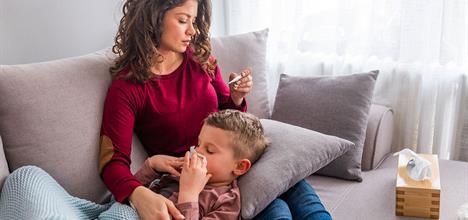The vaccine was not rushed.
Speed does not mean rushed. It meant leveraging experts, money and decades of previous work to get us a vaccine in 9 months. This included:
- Previous research that started in 2003 thanks to SARS (COVID-19’s cousin)
- Money and resources for scientists around the world
- Production started before clinical trials were complete because the government financially supported the effort
- Although vaccines went through Phase I, II and III, pleases were overlapped to remove white space. This is a standard practice.
- High rates of disease in the community (unfortunately) meant we didn’t have to wait for a minimum number of COVID-19 cases during clinical trials.
- Over 150,000 people flooded to participate in the US trials. This couldn’t have ben done without each and every one of them.
Adolescents will likely experience side effects.
Adolescents have experienced:
- Mostly mild-to-moderate side effects reported in the clinical trials: fever, fatigue, headaches, chills, diarrhea, muscle and joint pain
- Worse side effects with the second dose compared to the first
- Swollen lymph nodes were more common in the vaccine group compared to the placebo. All cases resolved within 1 week.
The vaccine is effective.
There were no severe cases of COVID-19 during the study and there was 100% efficiency is clinical trials (16 cases of COVID in placebo and 0 in vaccinated). Research shows the vaccines help avoid long COVID-19 and improve symptoms of those already with long COVID-19.
There is a need.
- Adolescents have the highest rate of infection and symptomatic infection (compared to adults and children), but hospitalizations are lower than adults.
- There have been 127 COVID-19 adolescent deaths since the beginning of the pandemic. Although this seems low, death among adolescents is low overall. COVID-19 is a top 10 cause of death for adolescents.
- There has been 3,742 MIS-C cases since the pandemic; 21% were among adolescents. Severity of MIS-C is worse for adolescents compared to younger children.
- Vaccines significantly reduce community transmission.
mRNA does NOT change DNA.
It’s biologically impossible for messenger RNA (mRNA) to alter DNA. In order for a mRNA vaccine to alter someone’s DNA, several events would have to occur:
- mRNA cannot enter the cell nucleus, where DNA lives. mRNA does not have the “secret door code” (called nuclear access signal) that would allow it to enter. mRNA vaccines can’t get in.
- mRNA can’t be converted to DNA. This would require a tool called “reverse transcriptase” which the vaccine does not have.
- mRNA cannot insert itself into the DNA. The mRNA would need a tool called “integrase” to do this, which the vaccine does not have.
The biotechnology has never been approved by the FDA before. It’s NOT because the past mRNA vaccines (for cancer, allergies, and SARS) have been deemed unsafe. It’s because past mRNA vaccines haven’t been very effective. mRNA breaks down very quickly, so it needs to be transported by something. Finding that something has been a challenge. For COVID-19, scientists found that fat bubbles for COVID-19 worked great.
The long term side effects, like infertility, are highly unlikely.
We do not know the long term effects of mRNA COVID-19 vaccines. However, based on our knowledge of mRNA and the human body, we do not expect long term side effects:
- Vaccine ingredients are cleared from the body very quickly. mRNA is very fragile and degrades within 72 hours of injection. The “fat bubbles” or lipids leave within days.
- mRNA vaccines are not made up of the actual pathogen. This means they do NOT contain weakened, dead, or noninfectious parts of the virus.
- In the history of vaccines, serious adverse side effects have ony popped up in the first 2 months of receiving the vaccine.
- Individuals who got pregnant after the vaccine had no complications from the vaccine. There are anecdotal reports that women’s menstrual cycles change after a COVID-19 vaccine. The body is mounting an immune response and this is likely a side effect, like fever.
Previously recovered adolescents still need the vaccine.
Efficacy of “natural” immunity is high, but adolescents still need the vaccine:
- Getting a vaccine, even for people who have already recovered from COVID-19, strengthens your immune response (antibody and T-cell protection)
- The vaccine better protects against variants of concern
- The immune system is messier from natural infection. It’s not as focused as vaccine immunity.
Source: Dr. Katelyn Jetelina, MPH PhD
All statistics are accurate as of May 24, 2021.



About The Author: Linda Penitusi
More posts by Linda Penitusi